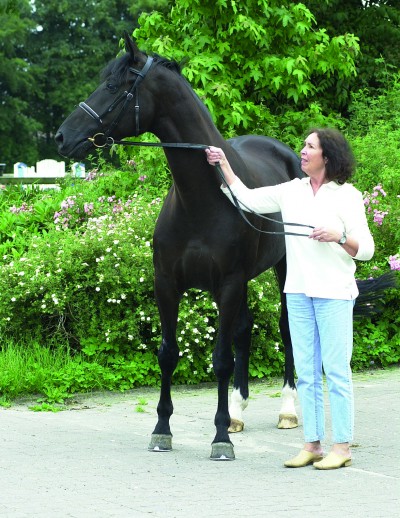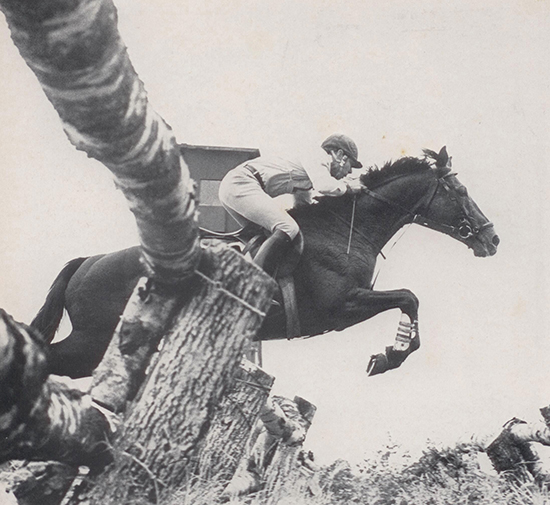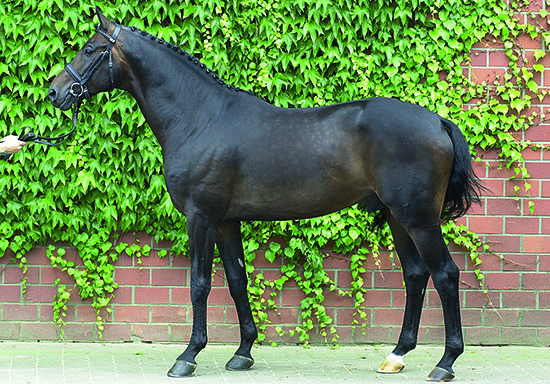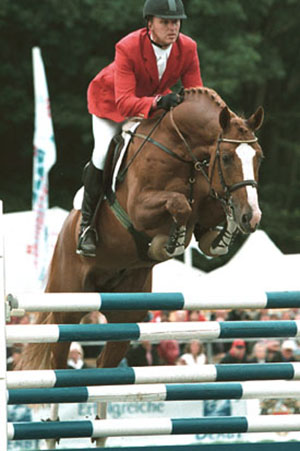Right in the heart of Oldenburg, Germany, we find once again a stud that originates with one mare – this time an eventer: Chica. This very important individual was ridden by the owner of the farm, Harli Seifert, and then went to Wolfgang Mengers who competed her at Advanced level eventing, taking the title three years running for Oldenburg’s best eventing horse.
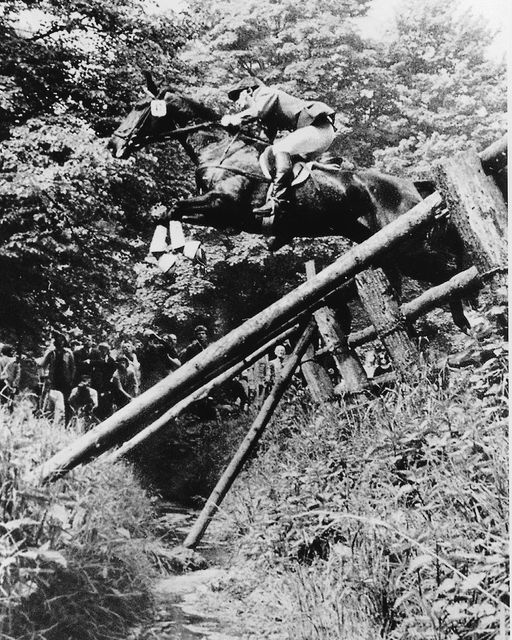
Chica – the eventer who founded a dynasty….
As a breeding mare, Chica (who on pedigrees appears as ‘Rudilore 2’ just too keep things confusing) founded three lines, two of which are found on Mrs Seifert’s stud where they form the backbone of her breeding operation. Both these foundation mares were by Volturno, himself a member of the German Eventing Team.
The stallion, Volturno
Volturno was just one of a number of successful competition horses by the Thoroughbred stallion, Volkorn xx. In dressage, there was Ann-Kathrin Linsenhoff’s Vallauris and H. D. Wolff’s Vago. Volkorn was by Neckar who also sired Waimannsdank.
Volturno was the sire of the dams or granddams of three Oldenburg Champion stallions, Lord Kemm, Gervantus and Glorieux.
One mare out of Chica proceeded to establish a dressage line, while another produced foals that could jump, with both lines producing performers of the highest quality. Harli Seifert was presented with a gold medal for breeding success, based on the competition career of Gio-Granno with Franke Sloothaak. Gio-Granno stood for Paul Schockemöhle, and is by Grannus out of Rumina by Ramino, out of Chica’s ‘jumping’ daughter, Voilà.
Rubin-Royal…
On the dressage line, success has also been notable with Rubin-Royal (by Rohdiamant) crowned Main Premium Dressage stallion in Oldenburg – a title awarded to five year old stallions on the basis of their progeny and their own performance record. Rubin-Royal has made a serious claim to the title of the most important of Rubinstein’s male descendants.
When I visited in 2002, Harli Seifert had 100 horses on her two properties. A mare breeding farm where she lived, and just a couple of hundred metres down the road, the stallion barn and training stables. Each year her stallions covered some 700 mares, with the stud breeding about twenty of its own.
Harli Seifert is the first horse breeder in her family. It was a private passion, that saw her start out in 1978 breeding her two stem mares by sending Chica to Volturno – a great performer, but by a Thoroughbred stallion and therefore a little ‘dodgy’ back then when half bloods were not trusted as breeding stallions.
“It was not easy,” she recalled in an interview I conducted in 2002, “everyone agreed that Volturno was a very good sport horse but there was some question as to whether he was really a breeding stallion. Neither of my two foals received a premium, the Breeding Director at the time said they were ‘not my type’ but I went my own way with my own head, and success has proven me right.”
Certainly looking at the twenty or so mares that made up Ms Seifert’s personal mare band, you could see the wisdom of her breeding policy. These are horses that were modern before ‘modern’ existed – such elegant, breedy ladies, it is no wonder that their foals have had such success.
And was it difficult as a woman to be taken seriously as a horse breeder?
“Of course it was not easy at first, and even now there is only one woman to fifty or sixty men, but if you have success and produce good foals, then you can do it. It is not easy getting manpower for the stud. It is not easy to get good riders for the sport – but you must do it because it is the modern way to use stallions in both sport and breeding.”
Couleur Rubin….by Cordalme Z out of a Grannus mare – but still a descendant of the original Chica…
How do you choose the stallions you send your mares to?
“It depends, with Contender the main point was performance, while the main point with Rohdiamant was type. The stallion has to fit the mare, so with the mother of Royal Rubin, she was a big framed mare so I thought she would be alright with Rohdiamant. You must choose the stallions with feeling, that is what breeding is, feeling. Two and two is not always four – sometimes it is three and sometimes it is five, and when you get five, that is the result of luck and instinct.”
“When I see a stallion like Akzent II or Rohdiamant, then I know that is the stallion for my mare. It is instant recognition. I don’t listen to the ‘experts’, it is my mare, and I will try her with that stallion. Breeding is not mathematics.”
And do you know right from the start when you have bred something special like Rubin-Royal?
“Some foals show at birth ‘I AM THE KING’, like Tantris, he is now a Grand Prix horse in the USA. Rubin-Royal was very beautiful, but not like a king, he didn’t have that kick as a foal. At eighteen months he started to develop and one year later you could see he was special. At three he had become a horse and a stallion.”
“There is no guarantee that a foal that looks good will become a good stallion or riding horse. Some look great as foals, and then two, three years later you say ‘no this is not the right horse, someone must have changed it.’ A lot has to do with the development of the foals – the handling, the feeding, the farrier, the vet, they must all work with the foals. You can’t send them out on the pasture and come back in three years time.”
“I feel I have a very great responsibility to the horses and I want to do everything for them myself. Today my breeding operation is so big that it is not possible to do everything, so unfortunately I have to get other people work for me. It is a problem, when I go to the riding stable and see them work the horses so hard without enough feeling.”
“I love going back to my mares at my home. That’s the greatest good fortune and when we wean the foals that is the most terrible day of the year for me because they leave my home and go to the riding stable.”
“I have very high principles to live up to with the horses. I get up every day early, always I feed at the same time – that is the most important principle, everything is done with a plan – every day has to be the same, it must be the same.”
“The moment we come to the pasture all the horses want to come to me, and that is my greatest good fortune. It is important that the horses know that I am good to them every time.”
Sadly the studfarm of Harli Seifert, like most of the great Oldenburg stud farms is no more…

